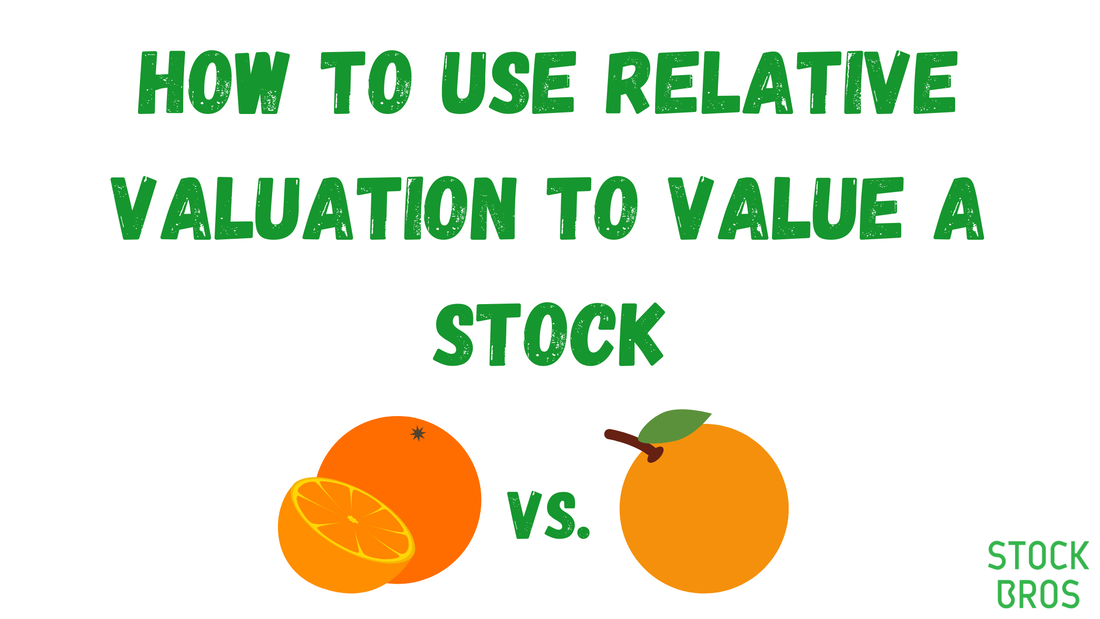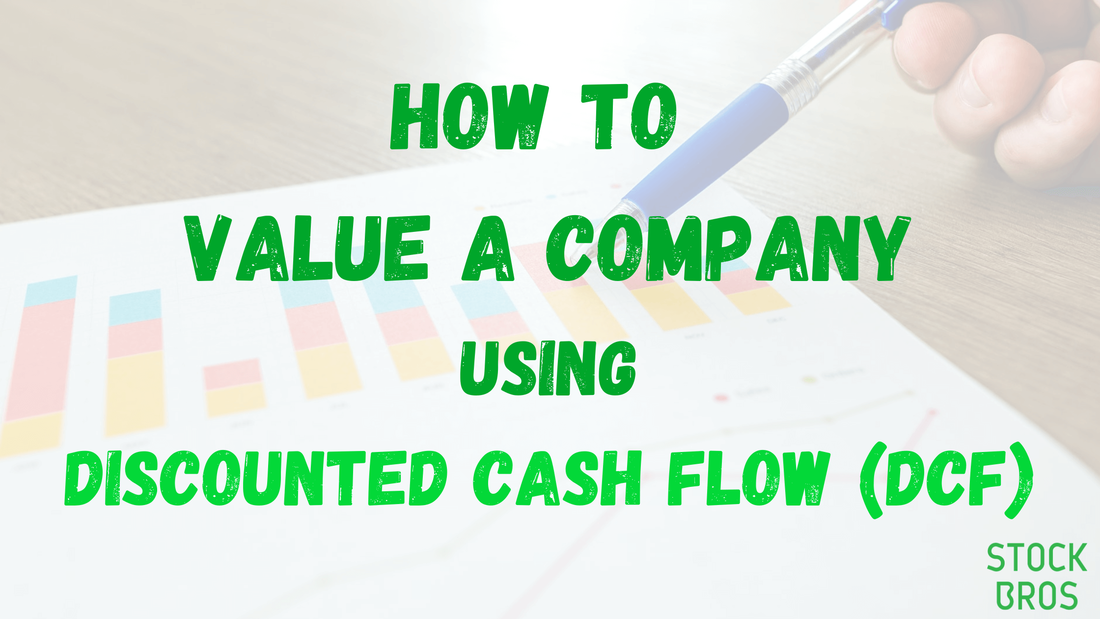|
Relative valuation is done by simply comparing companies in the same industry by using metrics/ratios such as P/E ratio or P/B ratio. It is one of the most common methods of valuation as it is by far the easiest. How to Use Relative ValuationRelative valuation isn't an "absolute" valuation method such as the discounted cash flow valuation and other types of valuations. Rather, it is dependent on using other stocks in the same industry, or the industry average to compare valuations. That itself already makes it a much different and simpler way of valuing a stock. For what it's worth, we prefer absolute valuation rather than relative valuation, but it comes down to personal preference. The most common ratio that almost everyone uses is the P/E ratio, which stands for price to earnings ratio. The formula for this ratio is annual earnings divided by market cap, or stock price divided by annual earnings per share (EPS). The lower the P/E ratio, the better. For example, a price to earnings ratio of 8 means you are paying $8 for every $1 of annual earnings that the company generates. You generally want this number to be as low as possible. For example: ABC stock has a P/E ratio of 8, the industry average P/E is 10. Therefore, based off this metric, ABC is undervalued. ABC has annual earnings per share of $5.50. You think that ABC stock should be trading at the same P/E as its peers because you feel that it is equal to its peers from an operational standpoint. Therefore, 5.50 x 10 = $55.50 fair value. Other ways of calculating the value of ABC stock using P/E: You may think that ABC stock is a slightly worse company in terms of its operations than the industry and that it doesn't merit to be trading at the industry average of P/E of 10. You also think that a P/E of 8 is too low since the company is only slightly worse. Therefore, you assign it a P/E of 9. $5.50 x 9 = $49.5 fair value. You can even assign it a higher P/E than the average if you have a valid reason to do so. The company's historical P/E can also be used. Let's say that the for the past 5 years, the average P/E of ABC stock was 9.5. It is now trading at a P/E of 8. Assuming that nothing has changed with the company or the industry in terms of operations, one can assume that ABC stock is undervalued and should return back to its historical 9.5 P/E ratio. Note: The variations of how to use the P/E ratio also apply to all the other possible metrics that can be used in relative valuation. Different Types of Metrics You Can UseThere are many other metrics people use such as: Forward Price to Earnings Price to Free Cash Flow Price to Book Return on Equity EV to Revenue EV to EBITDA Price to Sales Price to FFO Dividend Yield For certain industries, certain metrics are more important than others. For example, many micro-cap stocks aren't profitable yet, so it may be better to use a metric such as price to sales or EV to EBITDA to compare it to its peers. P/E ratio is reliable for banks, but unreliable for REITs because of accounting practices. Quick Overview of Each of the Above MetricsForward Price to Earnings: Formula: Current share price divided by future earnings per share estimate Fundamental analysts often have estimates for the future earnings of a company. Although these are just estimates and aren't as reliable as current, non-estimated metrics, they still give a good idea of a company's value. Let's say there are two bank stocks. Bank #1 has a current P/E of 10 and bank #2 has a current P/E of 11. Using current P/E, bank #1 is more undervalued. However, maybe bank #2 has higher growth prospects for the next year, and analysts give it forward P/E ratio of 8 compared to bank #1's forward P/E of 9. This may make bank #2 the better buy. Forward price to earnings isn't the only forward looking metric. There is also forward price to free cash flow, forward price to book, forward price to sales, and more. Price to Free Cash Flow: Formula: Share price/free cash flow per share OR market cap/free cash flow. It is an alternative to P/E. it measures the price of the company relative to the actual cash flows the company produced after accounting for capital expenditures. Besides comparing free cash flow to the company's peers, comparing P/E and P/FCF between the same company is a great way to see if there are large discrepancies between what the company counted as earnings and what the company actually received in cash, since cash is the lifeline that keeps businesses alive. We personally believe that P/FCF paints a more accurate picture of a company's operations compared to P/E. P/FCF should NOT be used for financial company's such as banks and insurance companies. That is the only industry where we prefer P/E. Price to Book: Formula: Market cap divided by shareholder's equity OR share price divided by book value per share. This metric is most useful to use for industries that require many assets such as industrials, banks, agriculture, energy, and others. Just like all the other relative valuation metrics, the P/B of a stock should only be compared to stocks in the same industry. Book value, also known as shareholder's equity, tells you the value of a stocks assets minus liabilities. If a stock is trading at a P/B of less than 1.00, then that means it is trading for less than what its book value is. Many value investors may see a stock that is trading for less than 1.00 book value and conclude that it is undervalued, especially if stocks in the same industry are trading above 1.00. Some industries such as technology do not require as many assets to operate and will usually have high P/B values. This does not necessarily mean that the stock is overvalued, it just means it is an industry that requires less assets. Tech companies make up for this by having a high return on equity. If a tech company has low ROE and a high P/B, then it may be a bad choice. Price/Book is NOT an ideal metric for tech companies because their most important expenditure is research & development. If you choose to use P/B for tech stocks, you would need to add past research & development expenses and amortize them over a reasonable time period. This may get complicated, thus, to keep things simple you might want to avoid P/B for tech stocks altogether. Return on Equity: Formula: Net income divided by shareholders' equity. ROE is a measure of how efficiently a company is in turning its net assets into profits. The higher the ROE, the better. However, sometimes a very high ROE can be a cause for concern if it is high for the wrong reasons. If a company has very little equity then it would make the ROE much higher. So a company with lets say, 200% ROE may seem amazing, but you may want to do some digging to find out why their equity is so low (possibly a high amount of debt). You want a company with strong operating results being the cause for them having higher ROE than peers. EV/Revenue: Formula: Enterprise value divided by revenue (the formula for EV is: Market cap + debt - cash & cash equivalents) This is often used for acquisitions or for small companies in the growth phase that still aren't able to generate a profit. The lower this multiple is, the better. The difference between this and the price/to sales ratio is that this takes into consideration debt minus cash (refer to the EV formula above), which is why it is often used for acquisitions because acquirers would have to take on a company's debt as well. EV/EBITDA: Formula: Enterprise value divided by EBITDA This is also commonly used for acquisitions. Unlike EV/Revenue which only considers sales, EBITDA is a measure of a company's ability to generate earnings. This can be used for many kinds of companies, although we wouldn't recommend using EV/Revenue or EV/EBITDA for financial stocks. Price to Sales: Formula: Market cap divided by revenue. This can be applied to anything, but it is mostly applied to unprofitable businesses as it is usually one of the only ways to value unprofitable stocks. The cannabis sector is mostly unprofitable, so price to sales may be a good metric to use for cannabis stocks. If a company's price to sales is lower than its peers, it is considered to be undervalued by that metric. Price to FFO: Formula: Share price divided by funds from operations per share OR market cap divided by FFO Funds from operations is a metric used by Real Estate Investment Trusts (REITs). Price to FFO is the REIT equivalent to price to earnings of a normal stock. Don't use P/E for REITs! Similarly, there is also price to AFFO (adjusted funds from operations) that is used for REITs, which is the equivalent to price to free cash flow of a normal stock. Dividend Yield: Formula: Dividends per share divided by share price Dividend investors may want to compare companies in the same industry based off of their dividend yield. The higher the dividend yield, the better. However, this may lead you into buying a stock that has a higher dividend yield even though it may not be as great of a company as one of its peers. The dividend may also be unsustainable. It is important to do a dividend checklist before buying a dividend stock. Click here to see our dividend checklist. Conclusion Relative valuation is a simpler way of valuing a stock that compares a stock with other stocks in the same industry. When using relative valuation, one should use as many relevant metrics as possible to get the best idea of a company's value compared to its peers. Outlined in this post were just some of many metrics that can be used to assess companies in the same industry. Thanks for reading! If you enjoyed this article, please consider subscribing to our free newsletter to get articles like this sent to you when they are posted! You can also give us a follow on twitter @StockBrosTrades. Another article you may be interested in:
|
Categories
All
Archives
September 2022
|



 RSS Feed
RSS Feed